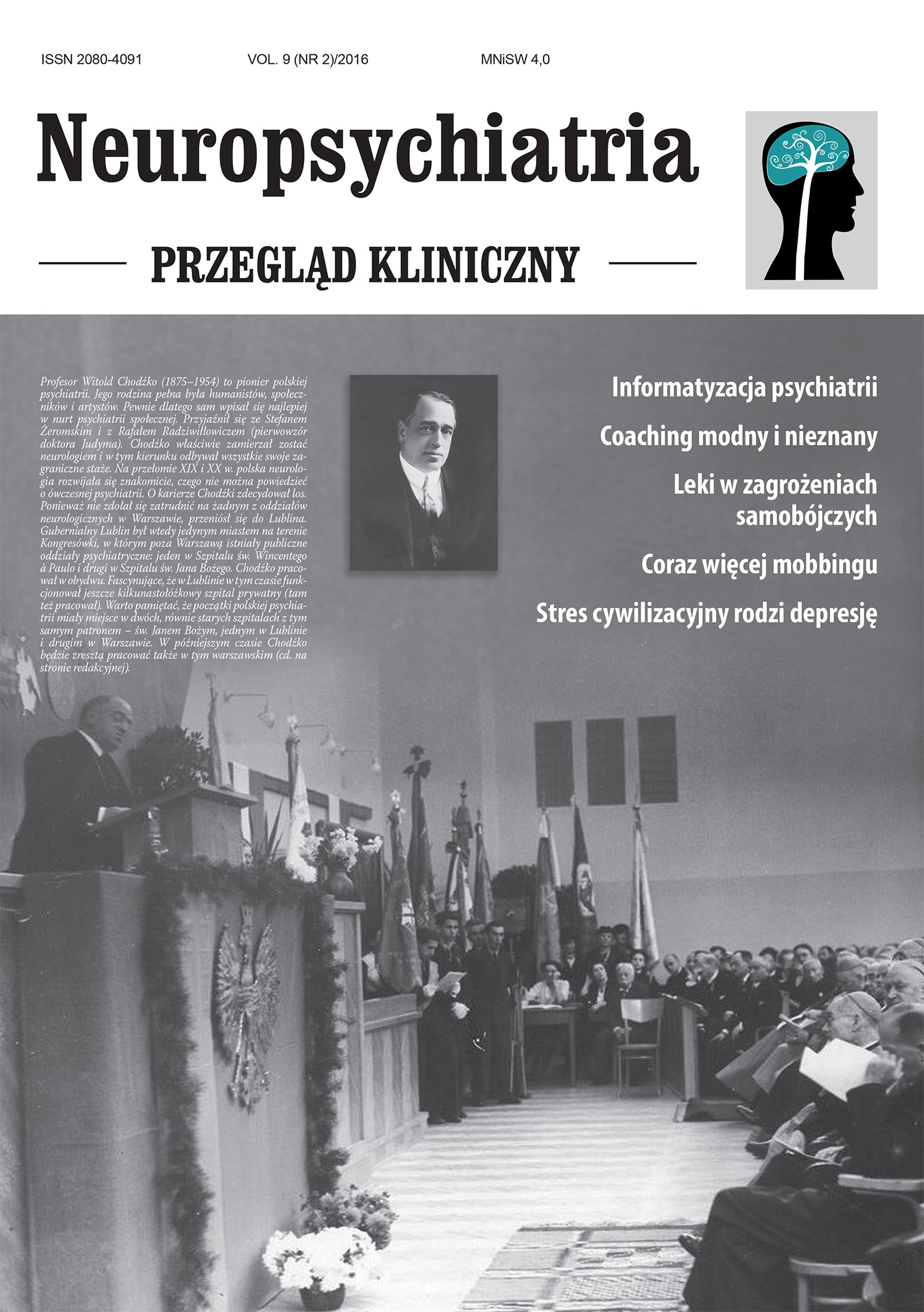Mobbing: looking for psychopathological identity of phenomenon Review article
Main Article Content
Abstract
Mobbing and bullying are both forms of the covert aggression at work, committed, inspired or accepted in the most severe forms by managers. Mobbing and bullying express themselves by accusing, humiliation, undermining the competence and other manipulations. Mobbing is illegal in Poland since 2004. However, victims are attacked under a veil of justifications so that crimes are difficult to prove. Mobbing and bullying hide aggressors’ own personality problems and incompetence. Victims selected for attacks are often intelligent, innovative high achievers, with good internal integrity and principles. Mobbing activities seem to be trivial and benign, but in fact are destructive and cumulative over a long period of time. Unconscious victims paradoxically feel guilty and try to repair their ‘mistakes’. They do not understand why they are being eliminated. Despite the fact that mobbing is a covert activity, it progresses through typical psychosocial phases. The psychiatric results for the victims may be catastrophic. Mental health is strongly connected with good interpersonal job relationships. The social support one receives at work helps to build up self-esteem. Because of mobbing, the workplace is subjected to financial losses, waste of key workers and public reputation. Psychiatrists’ awareness, education, and readiness for counseling and treatment of victims are far from satisfactory. Psychiatrists could play the most important role in supporting mobbing patients and be a ‘whistleblower’ exposing the pathology at work.
Article Details

This work is licensed under a Creative Commons Attribution-NonCommercial-NoDerivatives 4.0 International License.
Copyright: © Medical Education sp. z o.o. License allowing third parties to copy and redistribute the material in any medium or format and to remix, transform, and build upon the material, provided the original work is properly cited and states its license.
Address reprint requests to: Medical Education, Marcin Kuźma (marcin.kuzma@mededu.pl)
References
2. Paparella D, Rinolfi V, Cecchini F. Mobbing in Italy. European Foundation for the Improvement of Living and Working Conditions, EurWORK, European Observatory of Working Life, 2004.
3. Faure-Brac J. Cover story: A slow poison. Parliament of Australia, 08.05.2013 .
4. Leymann H. Mobbing and psychological terror at workplaces. Violence Vict 1990; 5(2): 119-126.
5. Olweus D. Aggression in the schools: bullies and whipping boys. Hemisphere Publishing Corporation, Washington 1978.
6. Bernabei A, Gebhardt E, Petrucci M. Psychiatric aspects in workers subject to mobbing. Med Lav 2005; 96(5): 432-439.
7. Sellier F. Mobbing – Psychoterror am Arbeitsplatz: Phänomen, Folgen und Analyse des Traumaverlaufs. Diplomarbeiten Agentur, Hamburg 1996.
8. Anna Jaworska. PIP: ok. 1200 skarg na mobbing w ciągu 9 miesięcy br. 03.11.2015.
9. Khoo SB. Academic Mobbing: Hidden Health Hazard at Workplace. Malays Fam Physician 2010; 5(2): 61-67.
10. Signorelli MS, Costanzo MC, Cinconze M, Concerto C. What kind of diagnosis in a case of mobbing: post-traumatic stress disorder or adjustment disorder? BMJ Case Rep 2013; 2013.
11. Bartyzel M, Łoza B, Grabowska A et al. Nowe formy cywilizacyjnej depresji i ich farmakologiczne leczenie. Neuropsychiatria 2016; 9(2): 59-64.
12. Elżbieta Pomaska. Była Prezes Fundacji Pomocy Dzieciom z Chorobą Nowotworową.
13. KGP. Komenda Główna Policji. 02.11.2015.
14. OECD. Temporary employment. 01.07.2016 .
15. PTPA. Polskie Towarzystwo Prawa Antydyskryminacyjnego.

